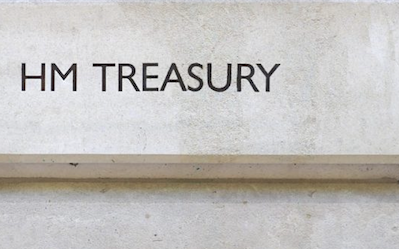UK government borrowing in the financial year to November 2023 was £116.4 billion, £24.4 billion more than in the same eight-month period last year and the second highest financial year-to-November borrowing on record, according to the UK’s Office for National Statistics (ONS).
The ONS said the current year’s UK government borrowing is forecast to reach £123.9 billion by the end of the financial year in March, 2024.
The ONS said total UK government public sector net debt excluding public sector banks was £2.67 trillion at the end of November 2023 and was provisionally estimated at around 97.5% of the UK’s annual gross domestic product (GDP) — with this remaining at levels last seen in the early 1960s.
The ONS said the UK government’s public sector net borrowing excluding public sector banks in November 2023 was £14.3 billion, the fourth highest November borrowing since monthly records began.
It said that in November 2023, the interest payable on UK central government debt was £7.7 billion, £0.1 billion more than in November 2022 and the highest November total since monthly records began.
“The large month-on-month increases in the Retail Prices Index (RPI) observed since early 2021 have led to substantial increases in debt interest payable, with the largest three months on record occurring in 2022 and 2023 …” said the ONS.
In the eight months to November 2023, the UK central government received £618.1 billion in taxes and other payments, an increase of £26.3 billion compared with the same period a year ago.
However, this increase was exceeded by a £70.8 billion increase in total expenditure, which rose to £754.9 billion over the same period.
“The principal determinant of the £116.4 billion borrowed by the public sector in the first eight months of the current financial year was the £136.9 billion borrowed by central government, which was partially offset by a £17.3 billion Bank of England (BoE) surplus,” said the ONS.
“The borrowing of both of these subsectors is affected by payments totalling £33.2 billion made by central government to the BoE over the last eight months under the Asset Purchase Facility Fund (APF) indemnity agreement. This was £32.4 billion more than the £0.8 billion paid in the same period last year.
“As with similar intra-public sector transactions, these payments are public sector borrowing neutral. They increase central government’s borrowing by £32.4 billion compared with the same period last year but reduce the borrowing impact of the BoE by an equal and offsetting amount.
“Though these indemnity payments reduced the BoE’s contribution to net borrowing by £32.4 billion compared with the same period a year earlier, this decrease was partially offset by a £17.3 billion increase in the net interest payable by the BoE, largely on the reserves created to finance the quantitative easing activities of the APF …”
Laura Trott, chief secretary to the UK Treasury, said: “It was right to spend billions protecting people during the pandemic and the energy shock triggered by Putin’s invasion of Ukraine, but we cannot leave our children and grandchildren to pick up the tab.
“That’s why the Prime Minister has made reducing debt a top priority.
“We are taking difficult decisions in the national interest to control our borrowing needs and improve productivity, so that we deliver the public services people need while keeping inflation down.”
